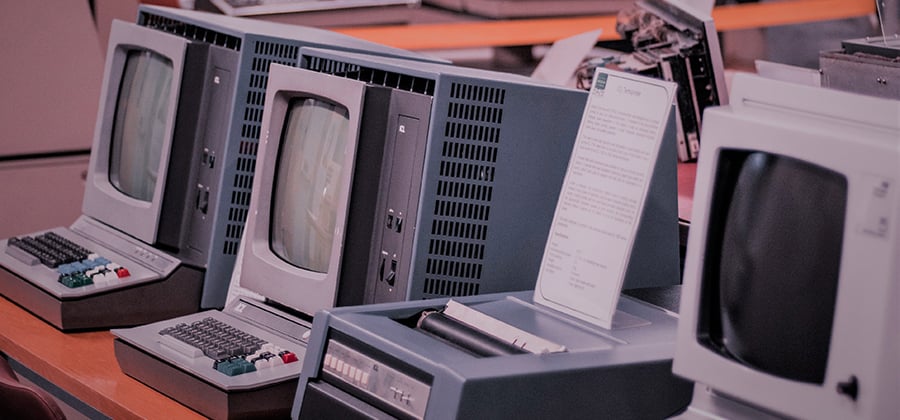The modern digital computer differs from other calculating machines by having an internal memory of sufficient size to hold a non-trivial program and data.
The first of these universal (as opposed to special-purpose) computers to come into operation was the Small-Scale Experimental Machine (SSEM) at Manchester University, which first ran a program on 21 June 1948.
By the end of 1949 there were two prototype stored-program computers in hesitant operation in the UK, with another in the USA and one in Australia. Of these four machines, the most user-friendly was the EDSAC at Cambridge University.
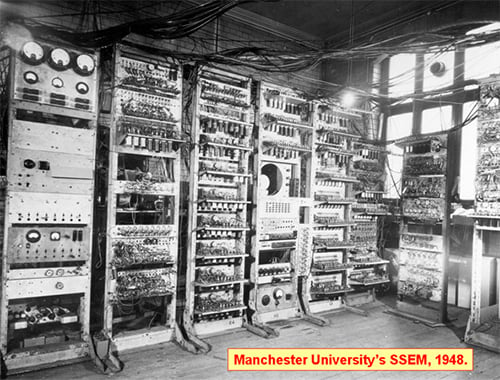
Manchester University's SSEM, 1948
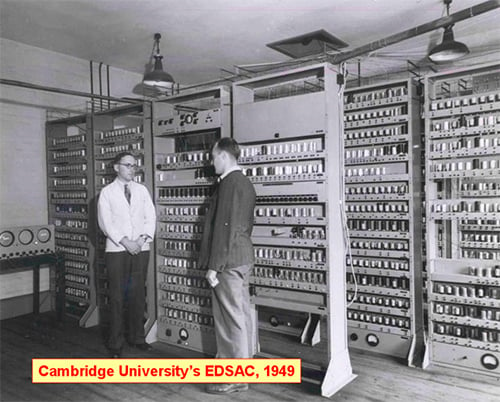
Cambridge University's EDSAC, 1949
The world's first commercially-available computer was the Ferranti Mark I, delivered in February 1951 and based on a Manchester University prototype.
In the UK, many of the early computer projects benefited from technological developments at the three Second World War R&D centres of excellence, namely: Bletchley Park, the Telecommunications Research Establishment and the Admiralty Signal Establishment. Leading scientists and engineers from these centres formed the nucleus of most UK computer design groups in the late 1940s.
The first computer to undertake business data processing was probably LEO (Lyons Electronic Office), based on the design of the Cambridge University EDSAC. LEO ran its first simple clerical program in April 1951.
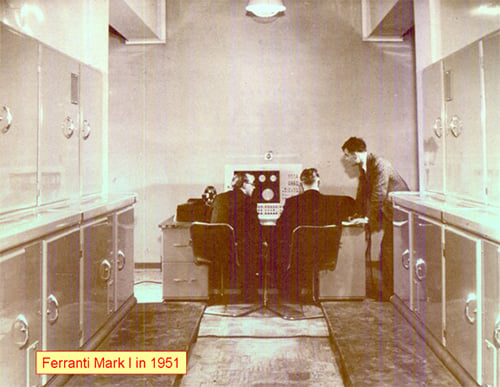
Ferranti Mark 1 in 1951
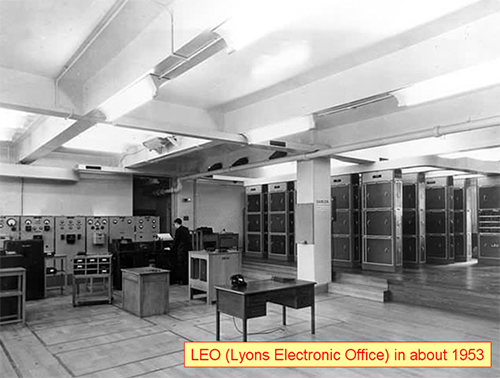
LEO (Lyones electronic Office) in about 1953
The market was slow to take off. Most of the pioneering digital computers were, by modern standards, rather large, expensive and unreliable. Most could only be programmed in machine code. Manufacturers provided very little software.
For you
Be part of something bigger, join BCS, The Chartered Institute for IT.
In 1951 Ferranti Ltd. appointed Vivian Bowden as the company's first computer salesman. Professor Douglas Hartree of Cambridge, a respected advocate of computing, could not understand Ferranti's plans. In September 1951 Hartree said to Bowden: 'We have a [digital] computer here at Cambridge; there is one at Manchester and one at the NPL. I suppose there ought to be one in Scotland, but that's about all.'
In the early 1950s, analogue computers were preferred, over digital computers, for many applications where speed and compactness were required. Examples are areas such as defence and process control. In the business world, electro-mechanical punched-card equipment was the tried and trusted means for office data processing in commercial enterprises.
The first non-British computer to be installed in the UK was an IBM 650 in October 1956.
By 1962 IBM had captured 18 per cent of the UK's market. Amongst the early (pre-1959) British computer manufacturers were:
- British Tabulating Machines Ltd (later part of ICT);
- Elliott Brothers (London) Ltd;
- English Electric Ltd;
- Ferranti Ltd;
- Leo Computers Ltd.
By 1968 the main computer interests of all the above companies had been merged into a single enterprise, ICL (International Computers Ltd). ICL traded until 2001, when it was swallowed up by Fujitsu.
The growth of the British computer industry is illustrated in the next graph.
Early British computers, 1945 - 70:
(a) number of British-designed new machines first appearing, each year;
(b) approximate cumulative total number of British-designed machines produced - both UK- installed and exported.
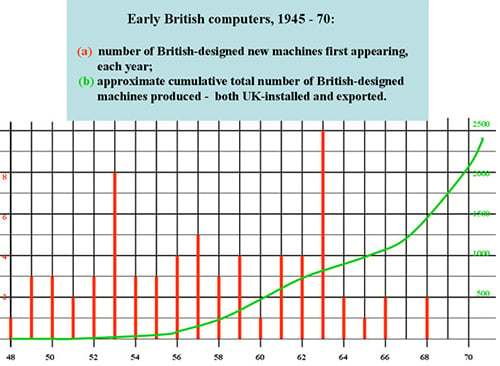
Early British computers 1945 - 70
It is interesting to recall some of the British 'firsts' and to invite others to add their comments/ corrections/ additions to the list.Some of the ideas introduced by the early British computers have remained with us ever since. Other ideas have been superseded by technological advances.
Some British firsts from the early years of stored-program computers.
- June 1948: First stored-program computer: the SSEM at Manchester University.
- June 1948: First demonstration of electronic Random Access Memory (RAM): the Williams-Kilburn CRT system on the SSEM.
- April 1949: First computer with Index Registers: the Manchester University Mark I.
- May 1949: First fully-functional stored-program computer: the EDSAC at Cambridge University.
- Feb. 1951: First commercially-available production computer to be delivered: the Ferranti Mark I.
- April 1951: Probably the first electronic computer to run a business data processing task: LEO.
- Nov. 1953: First transistorised computer: the Experimental Transistor Computer at Manchester University.
- Mar. 1954: First generally-available high-level language: the Mark I Autocode for the Ferranti Mark I.
- May 1954: Possibly the first electronic computer with hardware floating-point: MEG at Manchester University.
- Oct. 1955: First computer with a general-register set: the Ferranti Pegasus.
- Feb. 1959: UK's first software house, Vaughan Programming Services, founded by Dina St Johnston.
- Dec. 1962: First virtual memory, hardware address-translation & paging: the Ferranti Atlas at Manchester.
- Mid-1963: Probably the first industry-strength Algol compiler, Elliott-Automation Ltd. (for the Elliott 803).
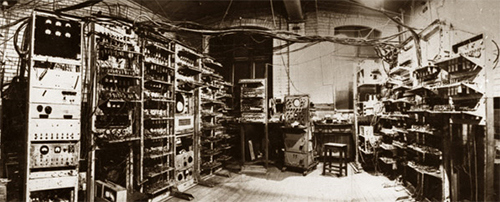
Early computing at Manchester University
For more information on early British computers, see http://ed-thelen.org/comp-hist/EarlyBritish.html
BCS wishes to thank Simon Lavington for putting this article together and the School of Computer Science, University of Manchester, for allowing us to use their images. BCS also wishes to thank: The Cambridge Computer Laboratory for allowing us to use its images and text (licensed under a Creative Commons Licence. Copyright Computer Laboratory, University of Cambridge. Reproduced by permission).








